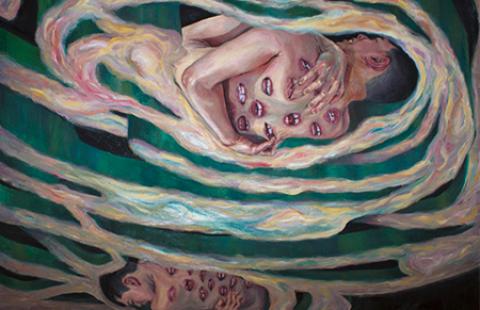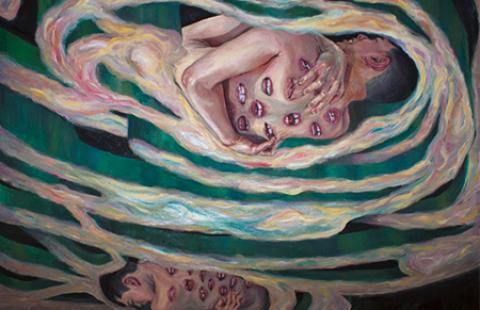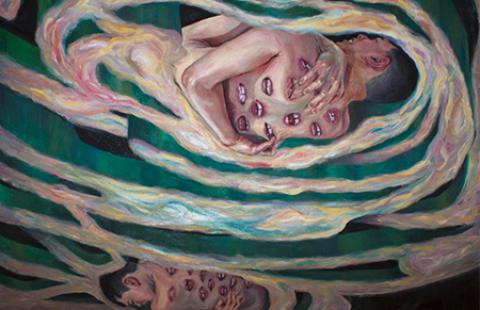Love, Aswang
May 31 - June 29, 2019
Curated by Kimberley Acebo Arteche
Opening Reception: Friday, May 31, 2019, 7:00 – 9:00 PM
Gallery Hours: Tuesday – Saturday, 12:00 – 6:00 PM
Curated by SoEx Curatorial Council Member Kimberley Acebo Arteche, Love, Aswang is a group exhibition and evening of performances that examines healing and decolonial practices by Bay Area female, femme, and non-binary identifying artists of color. This project takes its title from a Filipinx shapeshifting mythical creature that takes the form of a woman by day and a predatory animal by night.
Love, Aswang acknowledges past traumas experienced by women and non-binary people of color, transforming the oppressive ways of thinking that have been internalized and habitualized into new, empowering narratives. This project will feature artists and performers of color presenting newly commissioned works that claim space, articulate challenges to historical power inequities, and address the interconnectedness of gentrification, white supremacy, and misogyny as they affect the daily lives of Bay Area POC creative communities. Many of the works in this program draw on media that are often dominated by male artists – zines, murals, and graffiti – while opening up a space to consider personal and collective healing and social justice work as creative practices. They draw on personal and community histories and bodily experiences while resisting the co-optation or fetishization of POC and indigenous identities.
Aswang is a general term for any pervasive, shapeshifting, ‘evil’ being in Filipinx folklore, that eats human flesh. While many of these mythical beings share influences or similarities to those inherited through other eastern spiritualities, most researchers believe the Aswang can be attributed to historical and sociological causes. Many ascribe the genesis of these beings to the hiya (shame) and xenophobia instilled by Spanish friars in those who refused to abandon indigenous belief systems for Christianity, particularly to strip the babaylan, female village leaders, and faith healers of their power. As aswang have been primarily associated with female monstrosity and patriarchal misogyny, we have seen a shift in diasporic communities to reclaim the aswang, the Poj Ntxoog, the brujx. As shapeshifters, we take many forms; moving through institutions, moving with community. No longer tethered to our hiya, the new mythology of the aswang grants us the powers to create space, to heal, to hiss and declare our empowered transformation.




